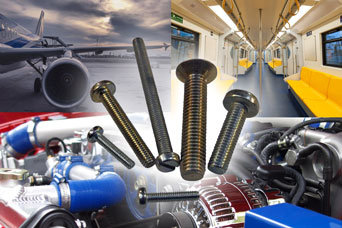Ultimately, one can never know completely how a fastener will function in-situ until you try it which is why accelerated aging trials and extended excess load tests are frequently performed to ascertain a realistic safety margin. Guidelines from hard-won experience can normally be accessed, but sometimes an unusual situation needs to be evaluated or perhaps a replacement of the exact same type is simply not available and a suitable replacement is required. It is easy and tempting to over-specify, but Challenge Europe can help.
Fasteners can almost be regarded as active components, given the changing loads and environments they are often called upon to compensate for in their daily service. The simple act of holding together two separate components requires a balancing of forces – this is a complex matter often addressed by application of a “safety margin” judged to be sufficient to deal with the unknowns involved.
However, some industries deal with much more life and performance critical situations than others and so the concept of designing for a product lifetime has evolved – in one way to ensure that the specification is adequate, but on the other to time-limit the expectation, and so ensure that proper maintenance is mandated.
Aerospace, automotive and rail industries all follow this design for a specific lifetime philosophy – an approach rarely used elsewhere – and sometimes this leads to over specification in products which do not need it. This over specification is often a comfort issue, as a sort of safety margin which often makes the custom spec prohibitively expensive if not actually impractical. Over specification is a significant potential problem in the fastener industry.
This generally occurs in applications where there are issues of weight and space but where cost is secondary because of the safety critical nature of the situation. However sometimes given a minimum lifetime expectancy there can be a tendency to “play it safe” and add a safety margin on top of a safety margin, leading to gross over specification, e.g. going up one or two sizes with consequent weight and space implications. Calling for an exotic and expensive alloy where a lower-cost high-grade treated steel would be more appropriate. Over specifying one fastener may not be a problem but over specifying thousands can make a big difference overall.
Design for a specific lifetime is often a highly skilled art of combining knowledge from different areas, e.g. specific performance of the fastener, effect of varying material, options for head types and the stress they involve, stresses inbuilt into the fastener from its manufacturing process or treatment – a solution which can be achieved in concert with a fastener specialist such as Challenge Europe. Contact us here to discuss.




